Greece Highlights – Epidavros Theatre, Mycenae, Temple of Zeus, Acropolis & Parthenon
Published August 22nd, 2009 in Aces Go Places. 0 CommentsEpidaurus was a small city in ancient Greece, at the Saronic Gulf. The prosperity brought by the Asklepieion enabled Epidauros to construct civic monuments: the huge theatre that delighted Pausanias for its symmetry and beauty, which is used once again for dramatic performances, the ceremonial Hestiatoreion (banqueting hall), baths and a palaestra. The theatre was designed by Polykleitos the Younger in the 4th century BC. The original 34 rows were extended in Roman times by another 21 rows. As is usual for Greek theatres (and as opposed to Roman ones), the view on a lush landscape behind the skene is an integral part of the theatre itself and is not to be obscured. It seats up to 15,000 people
The theatre is marvelled for its exceptional acoustics, which permit almost perfect intelligibility of unamplified spoken word from the stage to all 15,000 spectators, regardless of their seating. A 2007 study by Nico F. Declercq and Cindy Dekeyser of the Georgia Institute of Technology indicates that the astonishing acoustic properties are either the result of an accident or the product of advanced design: The rows of limestone seats filter out low-frequency sounds, such as the murmur of the crowd, and amplify/reflect high-frequency sounds from the stage.
The archaeological sites of Mycenae and Tiryns are the imposing ruins of the two greatest cities of the Mycenaean civilization, which dominated the eastern Mediterranean world from the 15th to the 12th century B.C. and played a vital role in the development of classical Greek culture. These two cities are indissolubly linked to the Homeric epics, the Iliad and the Odyssey, which have influenced European art and literature for more than three millennia.
Left: The entrance is known as the Lions Gate, though archaeologists now believe that these really should be a carving of lionesses rather than lions as the heads are too small to belong to the latter.


Greetings from the top of the hill. Coming up, we travel back to Athens…
Left: Temple of Olympian Zeus – is a colossal ruined temple in the centre of the Greek capital Athens that was dedicated to Zeus, king of the Olympian gods. Construction began in the 6th century BC during the rule of the Athenian tyrants, who envisaged building the greatest temple in the ancient world, but it was not completed until the reign of the Roman Emperor Hadrian in the 2nd century AD some 650 years after the project had begun. During the Roman periods it was renowned as the largest temple in Greece and housed one of the largest cult statues in the ancient world.
Right: The columns were made up of separate rings joined together by lead (through the centre). Note – this is a Corinthian column.
The Parthenon (Ancient Greek: ΠαÏθενών) is a temple of the Greek goddess Athena whom the people of Athens considered their protector. It was built in the 5th century BC on the Athenian Acropolis. It is the most important surviving building of Classical Greece, generally considered to be the culmination of the development of the Doric order. Its decorative sculptures are considered one of the high points of Greek art. The Parthenon is regarded as an enduring symbol of ancient Greece and of Athenian democracy, and one of the world’s greatest cultural monuments. The Greek Ministry of Culture is currently carrying out a program of restoration and reconstruction.
Old Temple of Athena


After this, we bade farewell to Athens and made our way to the islands of Mykonos & Santorini!
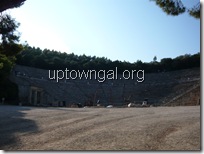

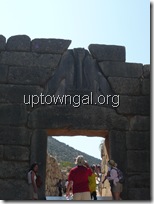
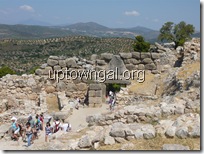
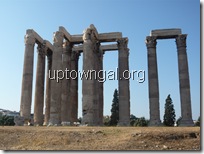
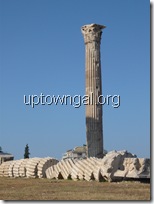
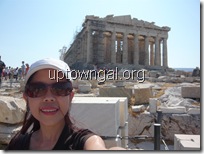

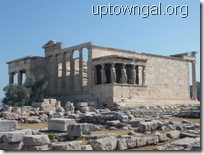
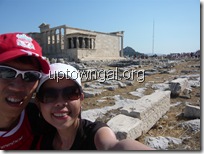
0 Responses to “Greece Highlights – Epidavros Theatre, Mycenae, Temple of Zeus, Acropolis & Parthenon”